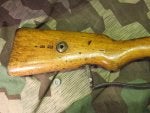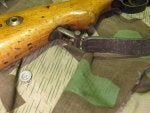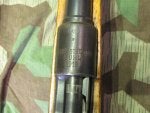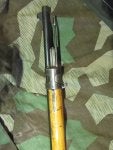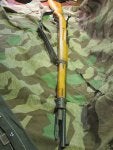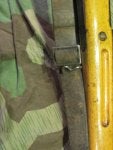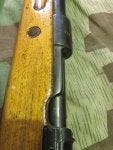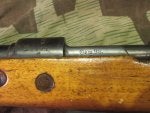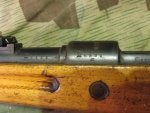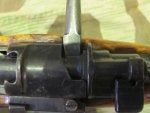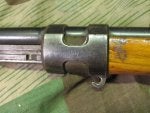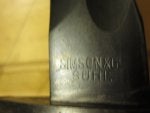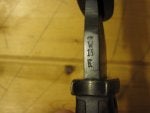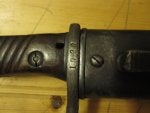+Pictures off bayo.
Got My first GEW.98 today, its a 1918 V. CHR SCHILLING SUHL made gun. I paid 360$ for it. Is this a fair price ? , I believe it was ok. (had to have it). I have some GEW98`s who is converted to K98 , but always wanted a original (long Mauser) GEW.98.
The rifle has the weimar republic 1920 property mark to.
What strange blond wood is this? Did not find the letter stamp for other wood i read about here on the forum.
I got a x saw back butcher bayo for it to, its a Simpson å co suhl. At least the same city.
How rear is the original sling? Is there usually any stamps on the sling?, could not find any.
The safty and the cleaning rod is not the same number as the rest.(bummer).
Any thoughts about the rifle?
![]()
![]()
![]()
![]()
![]()
![]()
![]()
![]()
![]()
![]()
![]()
![]()
![]()
![]()
![]()
![]()
![]()
![]()
![]()
Got My first GEW.98 today, its a 1918 V. CHR SCHILLING SUHL made gun. I paid 360$ for it. Is this a fair price ? , I believe it was ok. (had to have it). I have some GEW98`s who is converted to K98 , but always wanted a original (long Mauser) GEW.98.
The rifle has the weimar republic 1920 property mark to.
What strange blond wood is this? Did not find the letter stamp for other wood i read about here on the forum.
I got a x saw back butcher bayo for it to, its a Simpson å co suhl. At least the same city.
How rear is the original sling? Is there usually any stamps on the sling?, could not find any.
The safty and the cleaning rod is not the same number as the rest.(bummer).
Any thoughts about the rifle?
